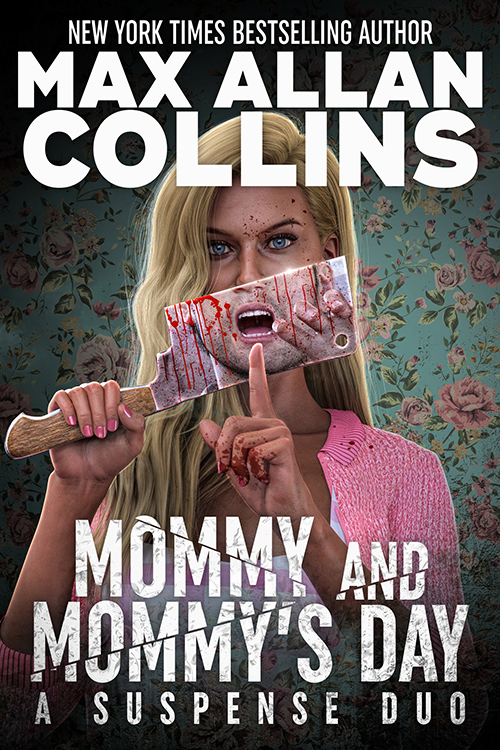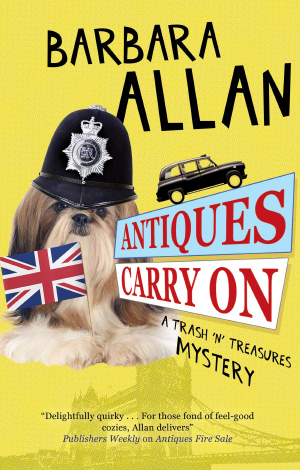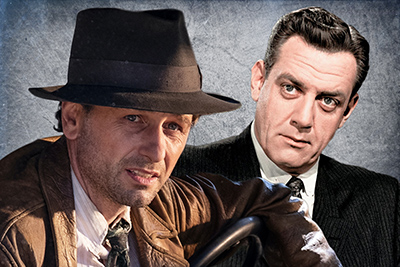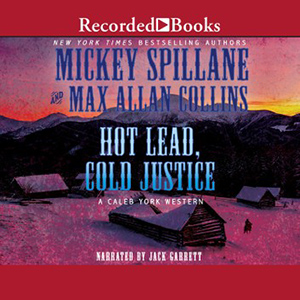I have had a very positive response to my announcement of signing a deal with Wolfpack Publishing. The readers who think enough of my work to check in here are happy to know that the door is open for me to revive and continue various series (or write sequels to standalones) that would otherwise be of no interest to my other publishers.
But let me assure all of you that, for now at least, I am still aligned with a number of mainstream publishers. Mike Hammer is still attached to Titan, who have been incredibly supportive of my efforts to complete (not continue) Mickey’s work. Under the Titan umbrella, but very much its own entity, Hard Case Crime – under the able leadership of Charles Ardai – continues to support Quarry and other work of mine. The Antiques series is no longer at Kensington, but is moving elsewhere (to be announced), though Caleb York will stay at that house as long they want him (and me).
These are early days at Wolfpack, but I can safely say that all of the original titles – including the novel I just delivered – will be published as physical books as well as e-books. This will include the new short story collections, and I hope the same will be true of the reprinted collections. (The Ness Omnibus is too large to be published as one book, but we are discussing the individual novels coming out in physical form.)
By the way, I do intend to continue my regular book giveaways with the original Wolfpack titles, to generate much-needed reviews. (Speaking of which, if you “owe” me reviews from past giveaways, better late than never.)
Coming soon – I don’t have a date to share just yet – will be a book collecting both Mommy novels. They will appear as a single e-book, but also as a “real” book, the first time both have been gathered together, which is something I always hoped for. Always intended.

I am sharing the cover with you this week, because I think it’s terrific. I find it very amusing because it plays off a line I came up with early on, in not only promoting Mommy as a home video release, but in putting together the investor proposal that raised the funds for the first feature’s production back in 1994. Specifically, I described the Mommy character as “June Cleaver with a cleaver,” and the art for this cover pictures her just that way (the reflection design is incredibly cool, in my opinion). Now, Mommy doesn’t actually wield a cleaver in either novel. Readers will have to accept that image as metaphorical, settling for the neck-breaking, electrocutions, shootings, and butcher-knife stabbings (among other things) that appear in the two novels.
Mommy and Mommy’s Day were originally published by Leisure Books in the late ‘90s. They were essentially tie-in’s to the DVD release of the movies (which came out on VHS in 1995 and 1997 respectively, and had a few theatrical screenings). The two books were novelizations of my screenplays, written during that period of my career when writing movie tie-in novels was a major part of how I supported myself as a freelance writer.
I had contracts for Nate Heller and other original work of mine with major mainstream publishers at the time, but those publishers – concerned about my selfishly prolific ways, crassly designed that I might make a living – did not want me to publish more than a couple of books a year, or better still just one. It wasn’t that I was being paid poorly, just that a paycheck for, say, $20,000, wasn’t something my family and I could live on for a year.
Because the Dick Tracy novelization (1990) – written strictly because I was then the scripter of the comic strip and had a proprietary attitude toward the property – was a success, I was able a few years later, post-Tracy, to offer myself as a writer of tie-ins. I loved doing the movie novels, because I was able to write all kinds of different genres and really flex my muscles, pursue interests beyond suspense, and learn new techniques. After all, I did Tom Clancy style techo-thrillers (Air Force One), war novels (Saving Private Ryan), westerns (Maverick), science fiction (Waterworld), sword and sorcery (Scorpion King), horror (The Mummy), espionage (I Spy), humor (The Pink Panther), and much more. Doing the novel for the second X-Files film was a real kick, as I was (and am) a big fan of the series. Eventually I was able to write original novels for such TV shows as NYPD Blue and (with Matt Clemens aiding and abetting) CSI, Dark Angel and Criminal Minds.
So it was natural for me to novelize my own two movies. I approached Leisure Books because one of their specialties was horror, and Mommy was psychological horror, often assumed to be an unofficial sequel to the classic The Bad Seed (I considered it more an homage).
Those two books are the most unusual novelizations I ever wrote, with the exception of Road to Perdition, where I was novelizing someone else’s version of my own work. What made the Mommy novels unusual was how different the process was from the usual novelization approach.
I have a feeling that many, if not most, readers assume that the novelizer of a film has seen – or perhaps has been provided a DVD (or back in the day, VHS) of the movie – for reference. That is never the case (almost never, as I will explain). Generally speaking, the film is being shot at the same time the book is written. The writer works from a script. I would make a novel out of the script from which the director was simultaneously making a movie. In surprisingly rare cases, the writer sees stills from the set, and even more rare a “sizzle” real designed for merchandising. A couple of times I saw the footage for films that fast food chains were viewing to decided whether to make a Happy Meal.
Which is an important aspect of explaining this: a novelization of a film is an ephemeral side product, like an action figure or lunch box. Novelizations happen less frequently now because one of their functions, maybe their main function, was to give fans of a movie an opportunity to re-experience it in those dimly remembered days prior to home video.
Often the script the novelizer works from is not the final shooting script – in fact, almost always it isn’t. In the case of I Spy, I was sent the script pages of a new ending that needed to be turned into prose just days before the book was to go into publication. Some studios didn’t care if the book wasn’t consistent with the finished film, which has made some novelizations highly collectible for the glimpses into what might have made it onto the screen, or for fans to experience scenes that had been cut.
Interestingly, many readers – wrongly assuming the novel came first – aren’t bothered by such inconsistencies at all.
The Mommy novels, because I had complete control over them, lacked the usual studio constraints. Both features were completed before novel rights were sold. Of the two, Mommy is probably the most satisfying, because I was able to start the story several months before the action of the film. So the first third or so is not in the movie version.
Mommy’s Day, a somewhat more complex story than its predecessor, filled out the desired number of pages without such extra material.
What made writing both novels unique in the novelization experience was my intimate familiarity with both movies. I was in the editing suite with director of photography/editor Phil Dingeldein every step of the way. While Phil is as expert an editor as I could imagine working with, he and I made each decision together, from which takes and camera angles to utilize to the length of holding shots. I loved the editing process, and eventually essentially edited my second documentary, Caveman: V.T. Hamlin & Alley Oop, at home, by use of freeze frame and time code, making a list for the assembly of edits. (Phil was not on that project.)
The director of a film sees it countless times. I know every frame of both Mommy films, every nuance, every line reading, every facial expression, every pause, every damn thing, so intimately that even today when I watch either film (or any of my films) I remember them in a way that is true of none of my novels or short stories.
So when I sat down to write the novels of the Mommy movies, I was recording them in a way unlike any other novelizations I’d written. At times it was a burden, because I was describing my indelible memories of the expressions on the faces of actors, and their line readings; of the sets, the locations, the lighting.
But it was also an opportunity to correct things I hadn’t been able to control in the editing suite. In editing, you have to deal with what you shot. If you never got exactly the line reading you wanted, but practicality made you move on, you’re stuck with what you settled for. Here I could tweak things further.
In a very real way, Mommy and Mommy’s Day are the only movie novelizations I ever wrote. Everything else was a novelization of a script.
My mantra, where writing movie novels was concerned, was always to make the novelization read like the book the movie was based on. I think I was very good at that. Oddly, making the novelizations of my own movies achieve that goal was trickier than usual. But I’m confident I succeeded.
I am thrilled to have these novels collected into one book – as I said, I always wanted that, always intended it. And, very soon, Wolfpack will make that happen.
* * *
Here’s what DICK TRACY 2 would have been. Gee, wonder if I would have gotten credit….
Finally, though you’ll have to scroll down a bit, here’s a great review of Hot Lead, Cold Justice.














